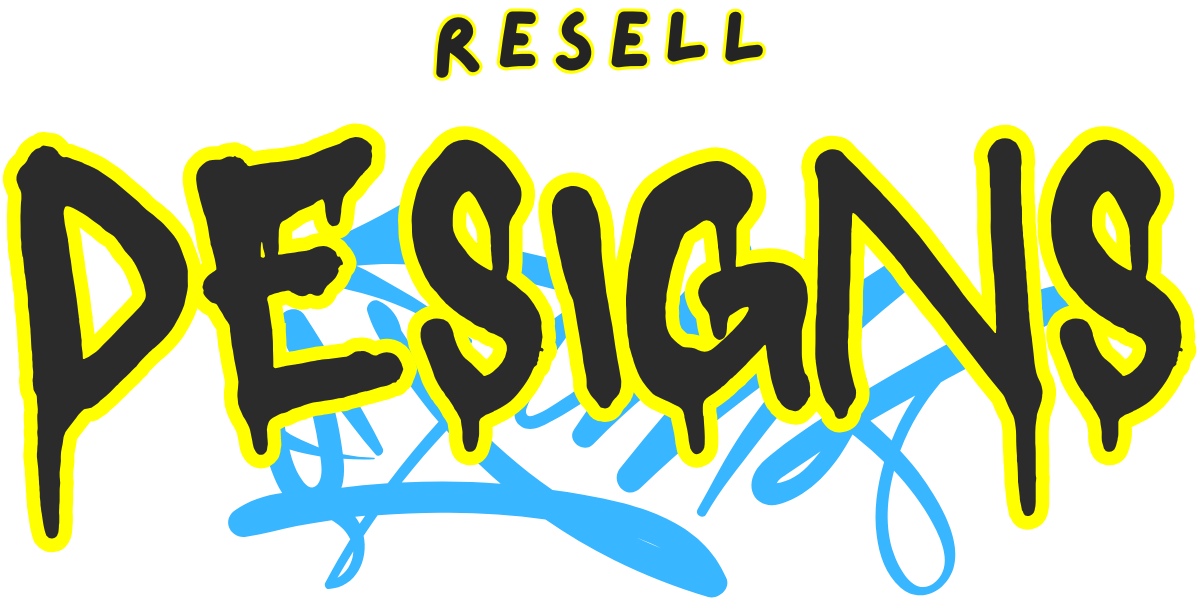A Beginner’s Guide to Selling on Etsy and Driving Organic Traffic
July 19, 2023 by David Santana – Absolute Swag LLC
Welcome to our comprehensive beginner’s guide on how to start selling on Etsy and unlock your potential for financial success. If you have a creative passion and dream of building a business that allows you the flexibility to work from home, this blog post is here to guide you through the exciting journey ahead.
Embarking on the path of selling on Etsy may seem intimidating at first, especially if you have no prior experience. However, we are here to assure you that the process can be both accessible and rewarding, even if you are starting with limited funds and no prior knowledge of e-commerce.
To begin your Etsy selling journey, the first step is setting up your Etsy shop. Fear not, as creating an account is a straightforward process that only takes a few simple steps. Once your shop is set up, you will have the opportunity to showcase your unique designs, printables, prompts, and merchandise to a worldwide audience.
However, it’s not enough to merely set up your shop; optimizing your product listings is crucial for gaining organic traffic and visibility on Etsy. This includes crafting compelling titles, writing accurate and engaging descriptions, and capturing high-quality images that truly showcase your products. By utilizing relevant keywords strategically, you can ensure that your listings appear in search results and attract the right audience.
To further enhance your shop’s visibility and reach, it is important to implement effective marketing strategies. Social media platforms can serve as valuable tools to promote your products and engage with potential customers. Collaborating with influencers or bloggers in your niche can also expand your reach and generate interest in your offerings. Additionally, Etsy offers built-in advertising options to increase your shop’s exposure within the platform.
One of the greatest advantages of starting an Etsy business is the flexibility it offers. You can easily manage your shop with just a laptop or tablet, making it accessible to anyone with an internet connection. Whether you have a few hours a day or a few hours a week, you can work at your own pace and gradually grow your business.
As you embark on your Etsy journey, remember that you are not alone. Etsy boasts a supportive community of fellow sellers who are always ready to offer advice, guidance, and encouragement. Take advantage of forums, teams, and networking opportunities to connect with other entrepreneurs on the same path. Learning from others’ experiences and sharing your own insights can prove invaluable as you navigate the world of Etsy.
Building a successful Etsy business extends beyond making sales; it involves establishing a brand, connecting with customers, and constantly evolving your products and strategies. Dedication, perseverance, and a willingness to learn are essential ingredients for your Etsy success story.
Now, let’s dive deeper into each step of the Etsy selling process:
Step 1: Setting Up Your Etsy Shop
Creating an Etsy shop is a straightforward process that involves providing basic information about your business, such as the shop name, policies, and payment methods. You can also choose to personalize your shop by adding a shop banner and logo. Once your shop is set up, it’s time to start adding products to your inventory.
Step 2: Optimizing Your Product Listings
When it comes to selling on Etsy, your product listings play a crucial role in attracting potential customers. To optimize your listings, start by crafting compelling titles that accurately describe your products and include relevant keywords. A catchy title can grab the attention of potential buyers and increase the visibility of your listings in search results.
Next, focus on writing engaging and accurate descriptions for your products. Highlight the unique features, materials used, and any customization options available. Be sure to provide measurements, colors, and other relevant details that will help buyers make an informed decision. Consider using storytelling techniques to create a connection with your audience and make your products more memorable.
In addition to captivating titles and descriptions, high-quality product images are essential for showcasing your offerings. Invest in good lighting and a decent camera or smartphone to capture clear and visually appealing photos. Take multiple shots from different angles, including close-ups to showcase intricate details. Don’t forget to edit your images to enhance colors and make them more visually appealing.
Step 3: Utilizing Keywords Effectively
Keywords are the words or phrases that potential customers use when searching for products on Etsy. By strategically incorporating relevant keywords into your titles, descriptions, and tags, you can improve the visibility of your listings in search results. Start by brainstorming a list of keywords that are relevant to your products and popular among your target audience. Use tools like Etsy’s search bar, Google Trends, or keyword research tools to identify high-ranking keywords.
When using keywords, make sure to incorporate them naturally into your titles and descriptions. Avoid keyword stuffing, as it can negatively impact your search rankings and the user experience. Instead, focus on providing valuable and engaging content that resonates with your audience while subtly incorporating keywords.
Step 4: Enhancing Your Shop’s Branding
Branding plays a significant role in creating a memorable and cohesive identity for your Etsy shop. Your brand encompasses elements such as your shop name, logo, shop banner, and overall aesthetic. Consistency is key when it comes to branding; ensure that your branding elements align with the style and theme of your products.
Consider your target audience and their preferences when designing your branding elements. Are you targeting a specific niche? Is there a particular style or vibe that resonates with your ideal customers? Tailor your branding to appeal to your target audience and create a cohesive look and feel that reflects your unique offerings.
Step 5: Promoting Your Shop through Social Media
Social media platforms offer fantastic opportunities to promote your Etsy shop and connect with potential customers. Choose platforms that align with your target audience and invest time and effort in creating engaging content. Share high-quality product images, behind-the-scenes glimpses, customer testimonials, and updates about your shop.
Engage with your audience by responding to comments, messages, and inquiries promptly. Participate in relevant communities, groups, and hashtags related to your niche. Collaborate with influencers or bloggers in your industry to reach a wider audience and tap into their established follower base.
Step 6: Leveraging Etsy’s Advertising Options
Etsy provides advertising options to help you increase the visibility of your shop and products within the platform. The Promoted Listings feature allows you to pay for ads that appear in search results or on other sellers’ listings. It’s a great way to boost the exposure of your shop and drive traffic to your listings.
When using Promoted Listings, start with a modest budget and monitor the performance of your ads. Experiment with different keywords, product images, and ad placements to optimize your results. Regularly review your advertising performance and make adjustments as needed to maximize your return on investment.
Step 7: Engaging with the Etsy Community
Etsy is not just a marketplace; it’s a thriving community of creative entrepreneurs. Take advantage of this supportive network by actively engaging with fellow sellers, joining teams, and participating in forums and discussions. Share your experiences, ask questions, and offer advice to establish connections and learn from others in the Etsy ecosystem.
By connecting with the Etsy community, you can gain valuable insights, receive feedback, and discover new opportunities for collaboration or cross-promotion. Remember, collaboration over competition is a guiding principle within the Etsy community, so embrace the spirit of sharing and supporting one another.
Step 8: Constantly Evolving Your Etsy Business
Success on Etsy requires continuous learning, adaptation, and innovation. Stay updated on industry trends, changes in Etsy policies, and new features or tools available to sellers. Attend webinars, workshops, or conferences related to e-commerce and entrepreneurship to expand your knowledge and skills.
Regularly analyze your shop’s performance by reviewing your sales data, customer feedback, and analytics provided by Etsy. Identify areas for improvement and experiment with different strategies to optimize your shop’s performance. Keep an eye on your competition to stay informed about market trends and find ways to differentiate your offerings.
Don’t be afraid to pivot and explore new product ideas or niches within your creative realm. Experiment with new techniques, materials, or designs to keep your offerings fresh and appealing to your target audience. Embrace feedback from customers and use it as a valuable tool for refining your products and customer experience.
Step 9: Providing Excellent Customer Service
Exceptional customer service is essential for building a loyal customer base and generating positive reviews and referrals. Prioritize clear and prompt communication with your customers, responding to inquiries and messages in a timely manner. Be proactive in resolving any issues or concerns raised by your customers, aiming for their complete satisfaction.
Packaging your products with care and attention to detail can create a memorable unboxing experience for your customers. Consider including a handwritten thank-you note or a small personalized touch that shows your appreciation for their support.
Step 10: Leveraging Analytics and Data
Etsy provides valuable analytics and data that can offer insights into your shop’s performance and customer behavior. Utilize these analytics to identify trends, understand which products are popular, and gain a deeper understanding of your customer demographics. Use this information to inform your product development, marketing strategies, and future decision-making.
By consistently monitoring and analyzing your shop’s performance metrics, you can make data-driven decisions to optimize your Etsy business and drive growth.
As we conclude this first blog post, we hope you feel inspired and equipped with the knowledge and strategies to kickstart your Etsy journey. Remember, success on Etsy is not an overnight achievement, but a result of consistent effort, learning, and adaptation. Stay committed to refining your shop, optimizing your listings, and engaging with the Etsy community.
In our next blog post, we will continue our exploration of the 7 Habits of Highly Successful Etsy Sellers with Habit 2: Begin with the End in Mind. Join us as we delve into the power of setting clear goals, visualizing your desired outcomes, and aligning your actions with your long-term vision. This habit will empower you to shape the trajectory of your Etsy business and drive it towards continued growth and success.
Thank you for being part of our journey as we uncover the secrets to achieving greatness on Etsy. Stay tuned for more valuable insights and practical tips in the upcoming blog post. Together, we will navigate the path to becoming highly successful Etsy sellers.
To be continued…

